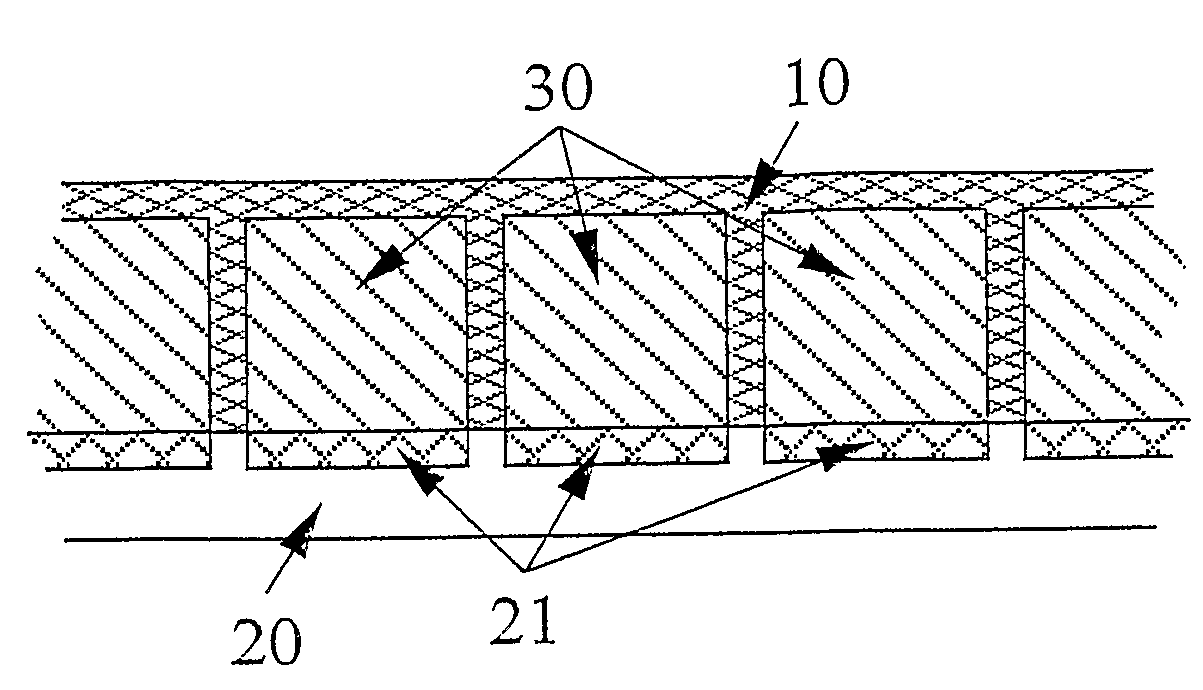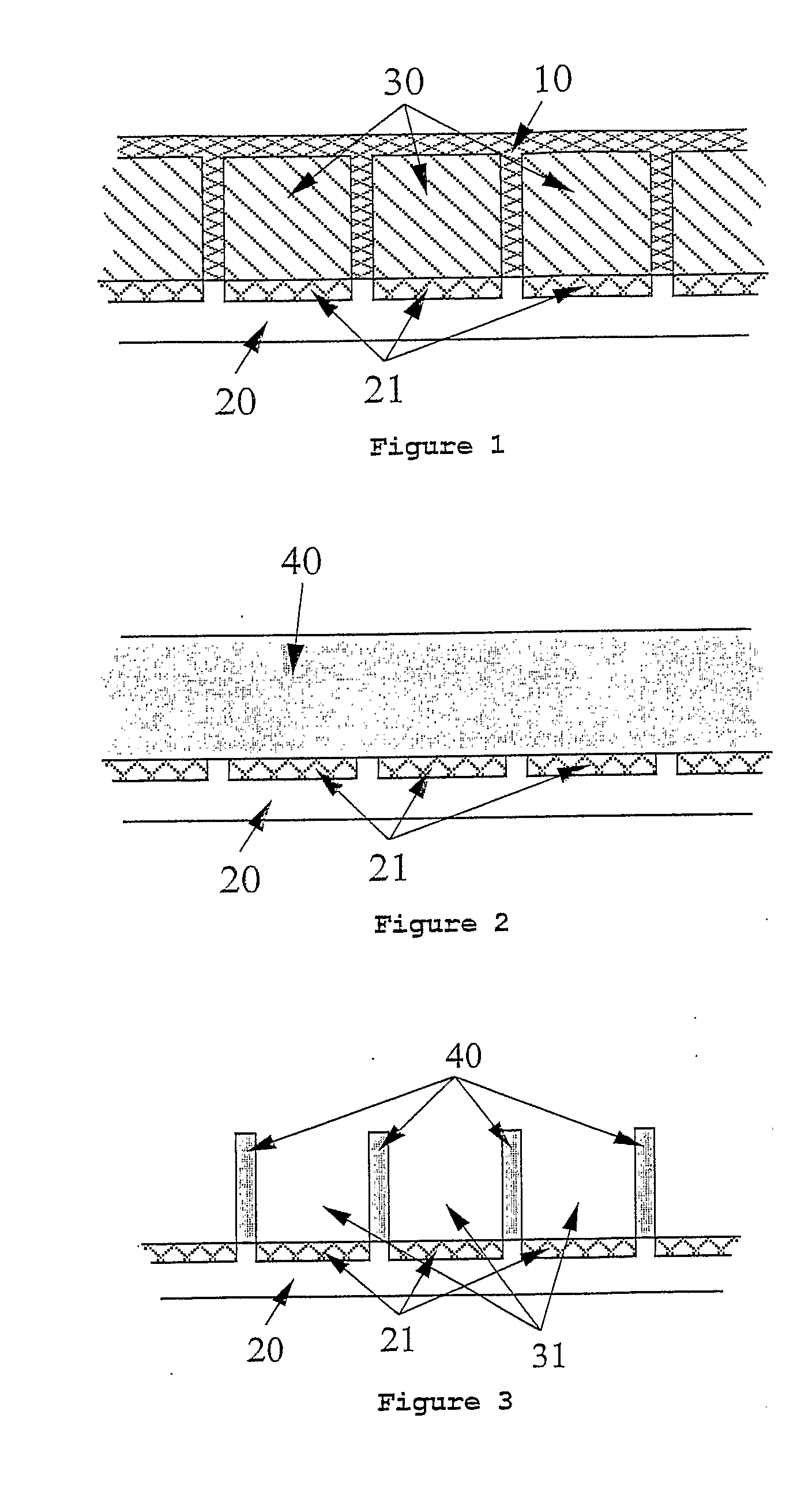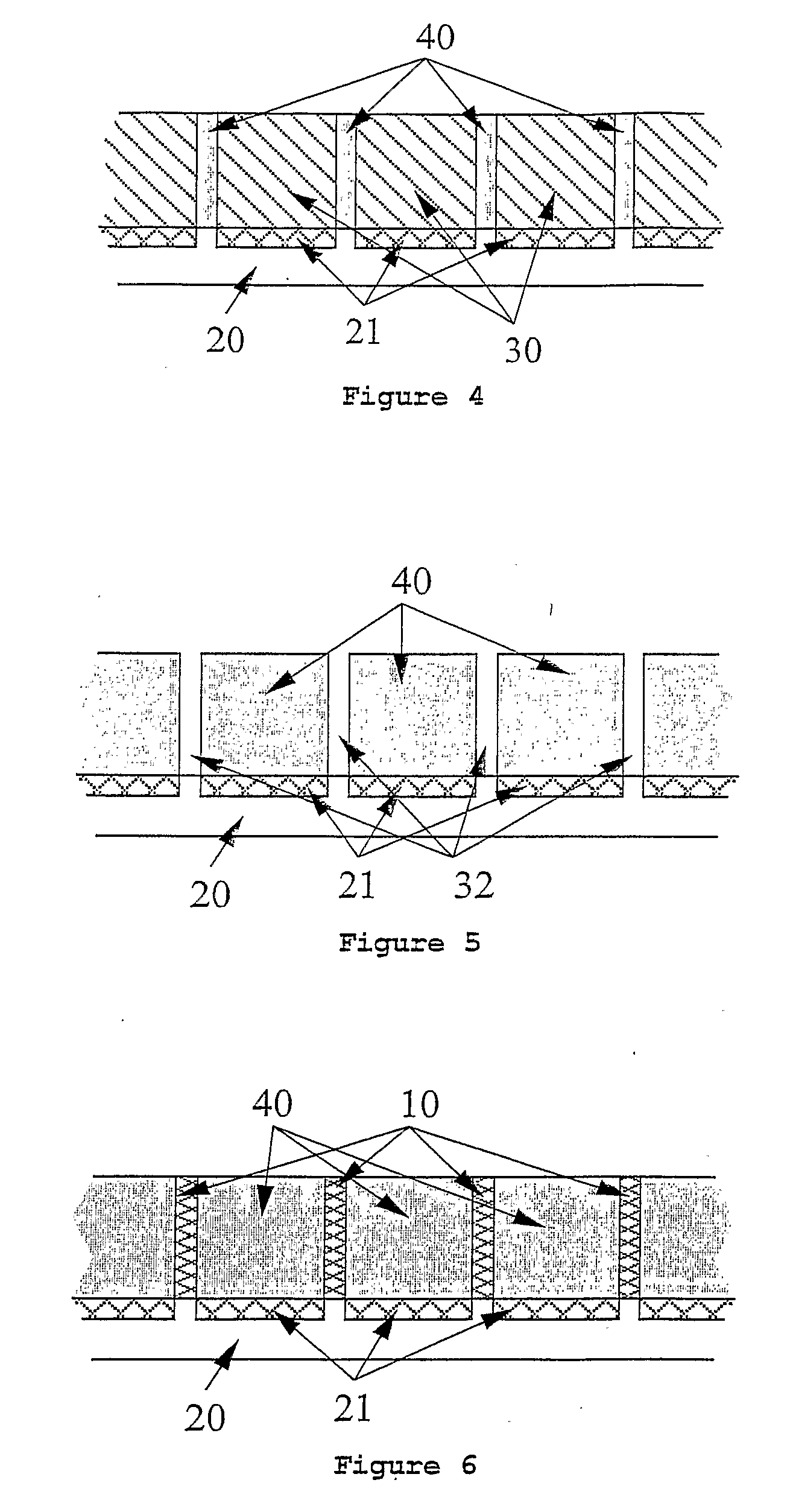X-ray imaging matrix with light guides and intelligent pixel sensors, radiation or high energy particle detector devices that contain it, its fabrication process and its use
a technology of light guides and pixel sensors, applied in the direction of radiography controlled devices, instruments, television systems, etc., can solve the problems of difficult processing, uneven appearance of radiographies, and damage to the person handling,
- Summary
- Abstract
- Description
- Claims
- Application Information
AI Technical Summary
Benefits of technology
Problems solved by technology
Method used
Image
Examples
Embodiment Construction
[0036]FIG. 1 shows a cross-sectional view of the x-ray detector matrix that consists in an image sensor (20), formed by a matrix of photodetectors (21), on which the matrix of scintillators (30), embedded in the reflectors (10), is placed. The radiation, coming from a radiation source placed above the detector, will penetrate in the reflector material (10) and reach the scintillators (30). The scintillators (30) will convert the radiation into visible light that is emitted in all directions. After a certain number of reflections, the visible light reaches the photodetectors (21), where it is detected.
[0037]The light guides prevent the dispersion of the visible light produced by the scintillators and the consequent interference between each pixel and its neighbors. It can be proved that the use of the light guides implies a much higher spatial resolution, as well as higher amplitude of the luminous signal that reaches the photodetector. As a higher amplitude of the luminous signal is...
PUM
 Login to View More
Login to View More Abstract
Description
Claims
Application Information
 Login to View More
Login to View More - R&D
- Intellectual Property
- Life Sciences
- Materials
- Tech Scout
- Unparalleled Data Quality
- Higher Quality Content
- 60% Fewer Hallucinations
Browse by: Latest US Patents, China's latest patents, Technical Efficacy Thesaurus, Application Domain, Technology Topic, Popular Technical Reports.
© 2025 PatSnap. All rights reserved.Legal|Privacy policy|Modern Slavery Act Transparency Statement|Sitemap|About US| Contact US: help@patsnap.com



